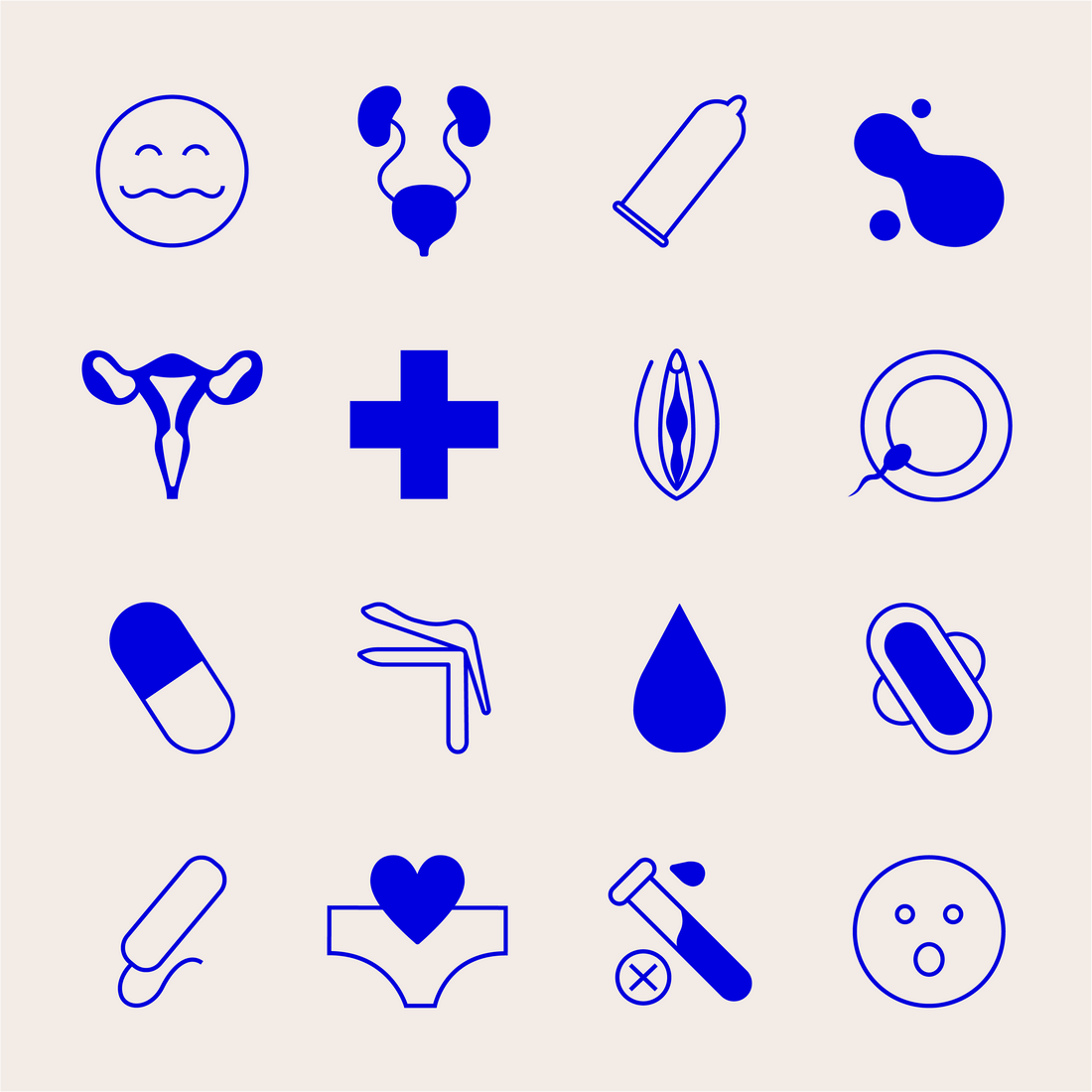Have you ever sat through a sex scene in a movie and at the end thought, “...wait. Is that what an orgasm is supposed to be like? Am I doing it wrong?” If you have, you’re not alone. Media depictions of sex can leave us feeling confused and questioning our own experiences — not just how we look and sound, but if we’re “doing it right” or if we’ve even had an orgasm at all. Orgasms aren’t portrayed super realistically in pop culture. Movies and TV shows often depict orgasms that involve shouting or dramatic shaking, orgasms that happen quickly (and without clitoral stimulation), and orgasms that don’t require lube. In short — only a very small example of what orgasms can look like. If your experience doesn’t match up, how can you know if you’ve actually had an orgasm? Even though pop culture talks about orgasms a lot, we rarely get into the nitty-gritty of what actually happens in the body during one. So, let’s dive in.
What an Orgasm Is
At its most basic level, an orgasm is the rapid (and uncontrollable) contraction and release of the pelvic muscles. Super sexy, right? Tension may build and become more intense, and as an orgasm approaches, you may feel a sudden release of the tension combined with those contractions we were talking about. (Those contractions are what can cause the shaking movements that you might associate with orgasms, FYI.) For people with penises, orgasms don’t always happen at the same time as ejaculation. Ditto for people with vaginas; ejaculation or squirting can happen before, during, or after an orgasm happens. Even though we can try to delay orgasms through edging or orgasm control, we can’t entirely manage how and when they happen. In fact, although we tend to associate orgasms with “peak sexual pleasure”, they can happen during non-sexual situations, without genital stimulation, and when we’re not experiencing pleasure at all. People might experience orgasm while listening to audio, breastfeeding, exercising, during sleep, and even during a sexual assault (remember that ‘uncontrollable’ and involuntary part of our definition?). Experiencing orgasm during those situations can range from being surprising and confusing to scary and shame-inducing, rather than being the “peak of sexual pleasure.”
Clearly, orgasms aren’t solely linked to sexual pleasure, so it’s more accurate to say that they’re a sensory experience that can be sexual, rather than a sexual experience that also is sensory.
After an orgasm, the body also releases a bunch of feel-good chemicals, including endorphins, oxytocin, and dopamine, which can help you sleep better, feel more grounded, and feel like you’ve accomplished something.
How an Orgasm Differs From Intense Sexual Pleasure
It can be hard to explain how an orgasm is different from intense sexual pleasure, but here’s one way to think about it: For many people, intense sexual pleasure feels like the slow climbing part of a roller coaster, while orgasm feels like the drop and loop-de-loops that follow the climb. (And if you’re afraid of rollercoasters like I am, feel free to substitute any other building-to-release metaphor here). Basically, intense sexual pleasure builds and could keep building (or could continue at that constant level) whereas an orgasm may leave you feeling physically sensitive, spent, floaty, or resolved. I asked my Instagram followers to tell me how they experience the difference between intense pleasure and orgasm, and here are some of the things they said:
- “Intense pleasure is drawn out, whereas an orgasm is like a firecracker suddenly went off.”
- “With intense pleasure, it’s more of a tingle in my brain, but with an orgasm, it’s more of a giggly burst of energy.”
- “I don’t feel a sudden release or sudden relaxation after intense pleasure without an orgasm — it’s more of a gradual experience of relaxation and calming.”
- “For me, intense pleasure is something that can continue even after orgasm.”
- “An orgasm feels like the release of tension. Intense pleasure feels like sustained good tension.”
People often ask me how they can experience orgasm for the first time, and here’s my advice: Follow where pleasure takes you, and keep following it bit by bit. That road just may lead to orgasm (and to pleasure beyond orgasm, too). That may mean trying toys, using different speeds and pressure levels, switching up positions, and involving different parts of your body. Rather than follow the “Good Sex Script” you may have seen laid out in pop culture, write your own script that actually fits your needs, desires, and boundaries best.
What an Orgasm Feels Like
Because an orgasm involves the sudden contraction and release of the pelvic floor muscles, an orgasm often feels like…release!
- “My entire body tenses up and then there is a wave of relaxation and pulses.”
- “It’s a build-up of unbearable pleasure, then waves of explosive pleasure, then relaxed release.”
- “A physical release, body tension gone, sometimes it feels like I have to pee.”
- “Total presence as I reach the peak, then contractions, pleasure, release, and calm.”
Not all orgasms happen the same way, though. Our orgasms may feel different depending on the parts of our bodies we’re stimulating and how we’re stimulating them, if we’ve used substances, where we’re at in our menstrual cycle, and on the context of the experience overall. Some people might usually experience many smaller orgasms in quick succession, whereas others may be on Team “One and Done.” So, it’s worth exploring for yourself, rather than basing your experience on someone else’s! And, some orgasms may notably not feel like a release. If you have a hypertonic pelvic floor or experience pelvic pain, orgasms could bring pain or discomfort with them, too. As one person put it: “Orgasms can feel like muscle spasms for me! Like a charlie horse in my vaginal canal.” The tension leading up to orgasms can cause muscle spasms, too. You might need to adjust your positioning, use tools, or take a quick break to relax your muscles and release tension in your joints. That’s okay! Bodies are always cool, and often kinda weird, so pay attention to what you need. (And if unwanted pain during sex is a regular thing for you, it’s worth reaching out to a doctor or pelvic floor physical therapist!)
If you’ve never had an orgasm before, or if you’re just not sure, if you’ve had one, I recommend taking a close look at your solo and partnered sex life.
Are you doing things that bring you pleasure? For people with vaginas, orgasms happen more frequently and easily when external clitoral stimulation is involved, so it’s important to focus on more than just penetration! Second, does time pressure get in your way? Feeling stressed about how long it’s taking us to reach orgasm can actually make it harder to reach orgasm. Major bummer, I know. If you notice that you’re telling yourself “you’re taking too long” or “just get it over with already” it’s time to take a break and a breath. Third, stop stressing about how you look or sound during sex or orgasm. You have pretty much no control over what your face looks like during an orgasm, so relax those facial muscles — because trying to manage what your orgasm looks like can keep it away. Plus, orgasms don’t have to be loud, screaming affairs (although that is what comes naturally to some people). So don’t measure your orgasmic status by your volume — measure it on how you feel! And finally, keep following the pleasure. Listen to your body when it asks for more, less, something different, or a break. Take deep breaths. And when you feel the tension start to build, keep doing what you’re doing. That sweet release is just on the other side!





















































2 comments
If you need a solid crypto tax software or needs a tech expert to help you recover lost Bitcoin from any fake crypto investment scheme, let me know and I’ll refer you. I recently recovered $317,800 of my crypto assets that were stolen by a fake Crypto investment platform via this assets recovery guru on Telegram https://t.me/prompttechrecovery . Outstanding customer service. They have been extremely helpful, and I must say very responsive/timely with assisting me with downloading a couple of issues. The issues were really huge but prompttech took out time to get me through them, rather than just referring me to the FAQ or Help menus. His ethical programming makes it easy to identify potential issues with no additional cost. Just send them a Telegram Chat: @prompttechrecovery, or Email: prompttechrecovery gmail.com, their service is legit and reliable.
After discovering my partner’s affair, things were never the same. Thanks to the brilliant service of this software genius hacker at ‘hackingloop6 @ g m a i l . c o m, who hacked her phone and gained me remote access to her phone activities, after so many confrontations and fights without proof. Since the affair, I’ve really struggled to be intimate with her. Hugging is ok but anything more feels too much for me. I feel like intimacy means getting into a headspace that I’m not ready for yet. Though she pleaded and offered to see a therapist, I still can’t get over her betrayal. She says it’s all in my head, and I agree there’s a bit of a mental block. I know it sounds ridiculous, but being intimate feels “disloyal” to my feelings. You can reach out to this software genius via ’hackingloop6 @ g ma i l .c o m, if you ever suspect your spouse of cheating and needed concrete proof to confront them. His hacking service is legit and affordable.